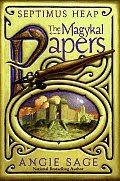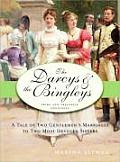
Remember last week when I posted my review of the first half of Matthew Pearl's The Last Dickens? I had only read half the book at that time, and I still managed to write a fairly long post! My final review will be up very soon.
I am pleased and excited to welcome Matthew Pearl to Beth Fish Reads today as a guest blogger. His post is just perfect for me because he talks about what it's like to work with an editor. I'd better pay close attention!
Cut It Out: The Editor's Role in The Last Dickens
People often ask what it is like working with an editor when writing a novel. It seems people imagine terrible moments of an editor throwing out whole sections of your book while you're looking the other way.
Working with an editor can be a very open and collaborative experience. Editors in my experience don't force changes on you, they suggest and guide you through them. My first editor had a funny way of putting the dynamic between editor and writer. He said final decisions about the content were always mine because the book would be in my obituary, not his.
At the end of the day, it's up to the author to absorb input from editors and anyone else and make the choices.
I can think of two good examples from my most recent novel, The Last Dickens, that illustrate the collaboration between editor and writer. One is an editorial suggestion that I incorporated, and the other is one I decided against.
The novel has two different, intertwining narrative strands. The primary narrative follows Dickens's American publisher, James Osgood, as he embarks on a quest for the mysterious finale of Dickens's last novel after Dickens's death. The second narrative strand traces Dickens while he is on his book tour of the United States.
Osgood's quest takes him to London and the English countryside as he searches for clues to Dickens's unfinished book. The quest itself is fictional, although I was able to draw from history when it came to the feeling of urgency to discover the true ending to the book and also to draw inspiration from an actual trip to England Osgood made a few years earlier to convince Dickens to let their firm publish his next work.
Historically, Osgood had a brother named Neddie who lived in Paris. Neddie was a classic American bachelor abroad and was a very colorful character. In my early drafts, Neddie meets Osgood and his assistant, Rebecca, in London to help their investigation.
My editor suggested cutting Neddie. He was one of those characters I really got along well with, so to speak, the kind that as a writer you look forward to seeing in any of his scenes. But I had lots of characters roaming around, particularly with the dual-narrative format I had committed to. Neddie, as a helper, was not essential to the plot or to defining Osgood, my protagonist. It was a tough decision, but my editor was right, and I retired Neddie as a character.
Of course, you can't just search your document for all “Neddies” and erase them. It's like pulling a tablecloth from a set table. Things topple over, and you have to make adjustments. I had undertaken a similar challenge removing Ralph Waldo Emerson as a member of the Dante Club in my first novel.
The second example comes from the other narrative strand. While Dickens was touring the United States, he and his staff got stuck in a flood in upstate New York. Nearby was a stranded train filled with livestock that would have perished in the water. Dickens led his staff to rescue them. [EDIT: see Matthew's post about this at Wendy's Musings of a Bookish Kitty.]
At some point in my drafts, we were trimming the Dickens-on-tour narrative in order to keep the right balance in relation to the main thread of the story. The animal rescue scene was one suggested by my editor to cut. This time, I decided against it because I felt it humanized the larger-than-life Dickens in a different way than did any other scene.
I'd say I implement an average of 90 percent of my editor's suggestions. You can feel an editorial change is the right thing to do and still wish it weren't.
The truth is, editing is only one of the many things an editor does. The title is a bit misleading. Editors at publishing houses acquire manuscripts to publish and guide a project through the process of cover design, marketing, and publication. They're less like the editors of movies and more like executive producers. In The Last Dickens, my hero, James Osgood, is actually an editor-publisher. Not that many novels out there with an editor as your hero!
Nothing, however, has to go to waste these days. For each of my novels, I have a section on my website for extras: Lost Chapters for The Dante Club, Secret Chapters for The Poe Shadow, Extra Chapters for The Last Dickens. Though the latter two include original content written for the web, each has scenes cut out in the revision process.
I call these my Revenge on My Editor.
_______
Thank you so much, Matthew, for giving me and my readers some insight into an author's reaction to his editor and the editing process. Now you have me wondering if there are any revenge pages out there with
my name on them!
For more Matthew, here are some helpful links:
official author website,
Facebook page,
Matthew on Twitter.
Click for more
 Weekend Cooking is open to anyone who has any kind of food-related post to share: Book (novel, nonfiction) reviews, cookbook reviews, movie reviews, recipes, random thoughts, gadgets, fabulous quotations, photographs. If your post is even vaguely foodie, feel free to grab the button and link up anytime over the weekend. Please link to your specific post, not your blog's home page. For more information, see the welcome post.
Weekend Cooking is open to anyone who has any kind of food-related post to share: Book (novel, nonfiction) reviews, cookbook reviews, movie reviews, recipes, random thoughts, gadgets, fabulous quotations, photographs. If your post is even vaguely foodie, feel free to grab the button and link up anytime over the weekend. Please link to your specific post, not your blog's home page. For more information, see the welcome post.






















































